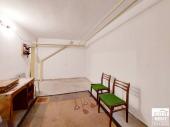|
| Ancient Misionis’ artifacts surprise archaeologists |
|
|
 The excavations and research of the Misionis antique and medieval town near today’s Targovishte, northeastern Bulgaria, have been going on for some 50 years now. They were started by a famous archaeologist, late Prof. Dimitar Ovcharov and now his son Prof. Nikolay Ovcharov has taken over.
The excavations and research of the Misionis antique and medieval town near today’s Targovishte, northeastern Bulgaria, have been going on for some 50 years now. They were started by a famous archaeologist, late Prof. Dimitar Ovcharov and now his son Prof. Nikolay Ovcharov has taken over.
The archaeologists discovered precious objects in the ground through the summer. They say these findings are a real breakthrough, as far as the life of ancient local people is concerned. According to Prof. Ovcharov the name of the town – Misionis means Moesia (or Mizia in Bulgarian). It was most likely the capital of the East Roman province of the same name back in the 5 – 6 c. The findings prove that the town was inhabited by wealthy people. Over the last few months the archaeologists discovered bronze vessels’ grips with the images of birds and a panther, which really resembles the stone reliefs of lions in one of the capitals of the First Bulgarian Kingdom /68 –1018/ from the end of the 9th c. – Veliki Preslav.
The remains of a stock exchange and the great number of coins, found by the archaeologists are the next proof of the ancient town’s wealth. Jewelry, made of animal bones, a silver ring, a gilded earring and other two, made of rock crystal etc. – those all bring out our admiration. The archaeologists have found enormous quantities of flat molded glass, used for stained windows at the ancient houses. We are talking here not about high-ranked officials, but of wealthy traders and craftsmen. And the very existence of glass objects on the spot is a testimony of Misionis’ wealth. The remains of about 8 broken glasses, concentrated in the ruins of a building have attracted the attention of scientists. The remains of other vessels used to serve wine and food have been found around them. It all comes to prove the existence of an ancient restaurant or an inn on the spot. “This is a rare thing in archaeology, to come upon an inn across Bulgarian lands, dated to 5 – 6 c.,” says Prof. Ovcharov and continues the story, fascinated by the joys of his work.
“We are now summing up the results of our summer activities; we are exhibiting the findings from July, August and September. It is a whole inn, and it is pretty big. The concentration of utensils and wine glasses means it was a restaurant. A similar one can be seen at the Pompeii historical town in Italy. The one we found in Misionis had most likely two floors and provided beds for the night. A major Roman road crossed Misionis from East to West and the inn was open to it. It was a common facility for such a big town. However, architecture is the most important thing there, not the objects. I am surprised to find out about such a prosperous town on the mountain’s top in a period, considered to be decadent due to the Barbarian raids. Those buildings, streets, squares – it is true art that we can only admire…”
The inhabitants of ancient Misionis left their town in the 14th century. Despite their strong resistance, the Ottomans conquered the town and burnt it down. The local people moved to the plains and the town was named Eski Jumaya, meaning an old, ancient Friday market day in Turkish. The memory of Misionis has been transferred to the name of today’s Targovishte, also meaning trade, a market in Bulgarian…
bnr.bg |
| Monday, Oct 27, 2014 |
|
|
|
|
| » RENTALS |

|
|
|
| Other |
€ 140 |
|
| Location: |
Veliko Tarnovo |
|
|

|